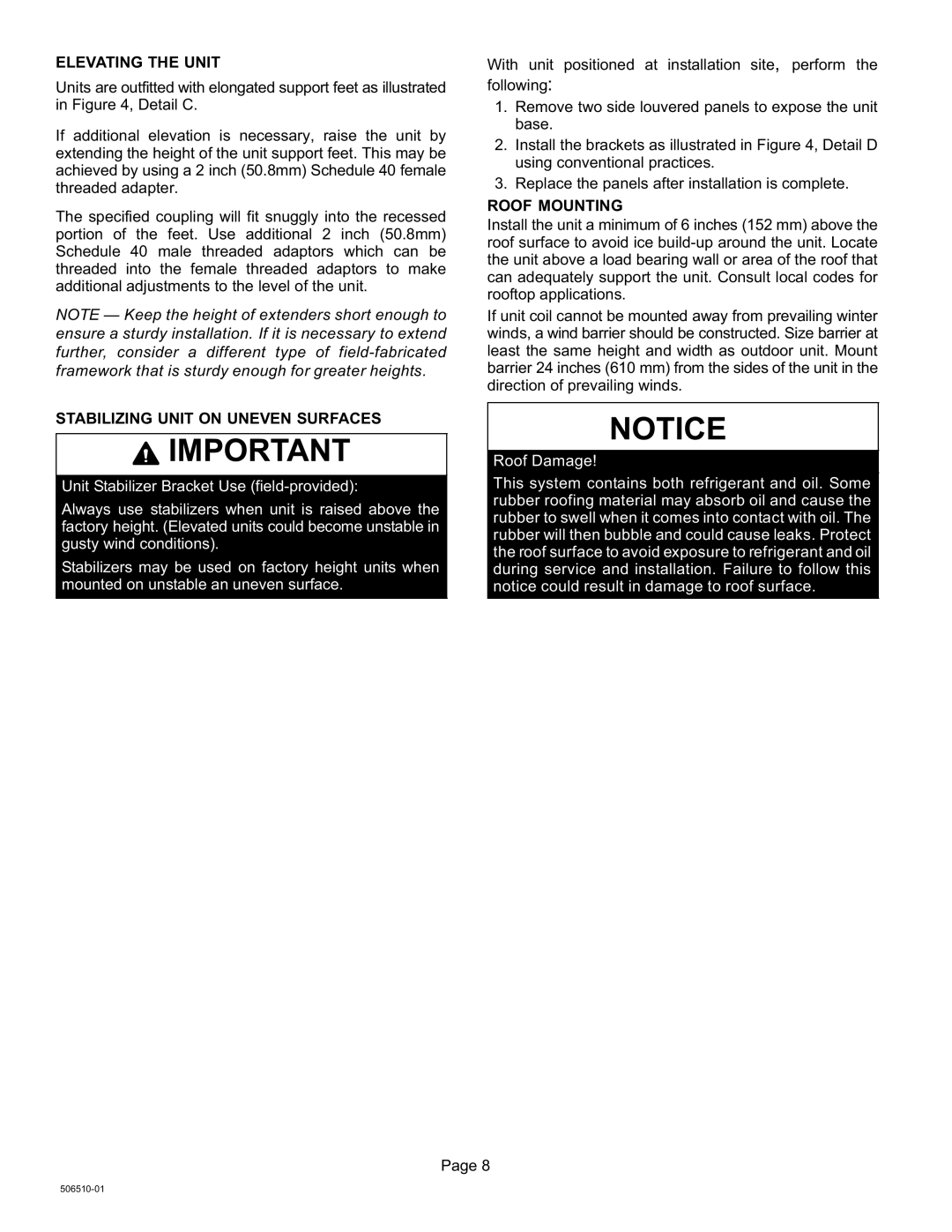
ELEVATING THE UNIT
Units are outfitted with elongated support feet as illustrated in Figure 4, Detail C.
If additional elevation is necessary, raise the unit by extending the height of the unit support feet. This may be achieved by using a 2 inch (50.8mm) Schedule 40 female threaded adapter.
The specified coupling will fit snuggly into the recessed portion of the feet. Use additional 2 inch (50.8mm) Schedule 40 male threaded adaptors which can be threaded into the female threaded adaptors to make additional adjustments to the level of the unit.
NOTE eep the height of ext enders short enough to ensure a sturdy installation. If it is necessary to extend further, consider a different type of field−fabricated framework that is sturdy enough for greater heights.
STABILIZING UNIT ON UNEVEN SURFACES
![]() IMPORTANT
IMPORTANT
Unit Stabilizer Bracket Use (field−provided):
Always use stabilizers when unit is raised above the factory height. (Elevated units could become unstable in gusty wind conditions).
Stabilizers may be used on factory height units when mounted on unstable an uneven surface.
With unit positioned at installation site, perform the following:
1.Remove two side louvered panels to expose the unit base.
2.Install the brackets as illustrated in Figure 4, Detail D using conventional practices.
3.Replace the panels after installation is complete.
ROOF MOUNTING
Install the unit a minimum of 6 inches (152 mm) above the roof surface to avoid ice build−up around the unit. Locate the unit above a load bearing wall or area of the roof that can adequately support the unit. Consult local codes for rooftop applications.
If unit coil cannot be mounted away from prevailing winter winds, a wind barrier should be constructed. Size barrier at least the same height and width as outdoor unit. Mount barrier 24 inches (610 mm) from the sides of the unit in the direction of prevailing winds.
NOTICE
Roof Damage!
This system contains both refrigerant and oil. Some rubber roofing material may absorb oil and cause the rubber to swell when it comes into contact with oil. The rubber will then bubble and could cause leaks. Protect the roof surface to avoid exposure to refrigerant and oil during service and installation. Failure to follow this notice could result in damage to roof surface.
Page 8
506510−01
